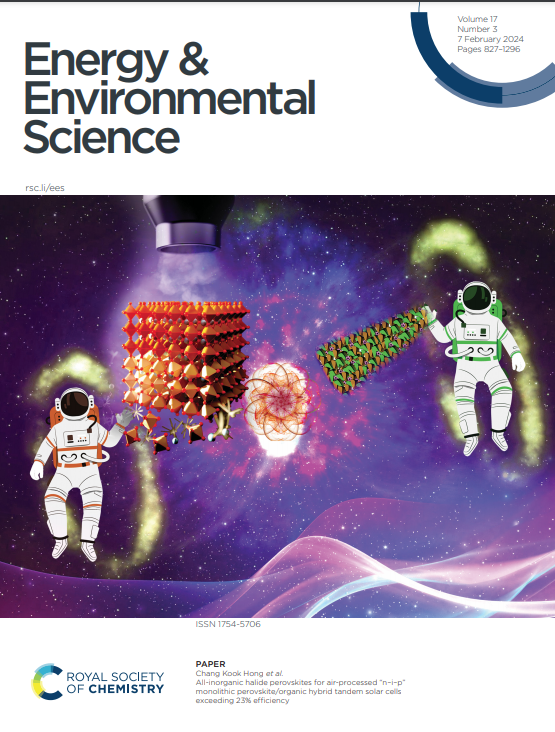Interfacial solar evaporation-driven lithium extraction from saltlake brines for battery-grade Li 2 CO 3 production
IF 30.8
1区 材料科学
Q1 CHEMISTRY, MULTIDISCIPLINARY
引用次数: 0
Abstract
The rising demand for lithium, essential for energy storage, has heightened the need for efficient extraction methods from salt-lake brines, as current techniques are inefficient and energy-intensive. Here we present a facile, durable and energyefficient approach for lithium extraction using a solar evaporation-driven ion pump. The evaporation system, composed of a porous hydrogel matrix embedded with lithium-ion sieves and featuring directional salt crystallization function, effectively separates lithium ion from other cations and accelerates lithium diffusion toward adsorption sites. Consequently, lithium adsorption kinetics (saturation time decreased from 8 h to 5 h), selectivity (from 65 to 413) and capacity (from 10.7 to 24.7 mg g -1 in salt-lake brine) are all significantly enhanced. Additionally, the designed evaporator enables zero-liquid discharge brine evaporation, ensuring long-term stable performance for freshwater production, which is used for subsequent lithium elution and battery grade Li 2 CO 3 production. Thus, a closed-loop system is achieved, enabling sustainable cycles of lithium extraction, freshwater generation, lithium elution, absorbent regeneration, and water reuse.界面太阳能蒸发驱动从盐湖卤水中提取锂,用于电池级li2co3生产
锂是能量储存的关键,对锂的需求不断增长,提高了对从盐湖盐水中高效提取方法的需求,因为目前的技术效率低下且能源密集型。在这里,我们提出了一种使用太阳能蒸发驱动离子泵提取锂的简便、耐用和节能的方法。该蒸发系统由嵌入锂离子筛的多孔水凝胶基质组成,具有定向盐结晶功能,可有效分离锂离子和其他阳离子,加速锂向吸附位点扩散。因此,锂的吸附动力学(饱和时间从8 h降低到5 h)、选择性(从65降低到413)和容量(从盐湖盐水的10.7提高到24.7 mg g -1)都显著增强。此外,设计的蒸发器可以实现零液体排放的盐水蒸发,确保淡水生产的长期稳定性能,用于后续的锂洗脱和电池级的Li 2 CO 3生产。因此,实现了一个闭环系统,实现了锂提取、淡水生成、锂洗脱、吸收剂再生和水再利用的可持续循环。
本文章由计算机程序翻译,如有差异,请以英文原文为准。
求助全文
约1分钟内获得全文
求助全文
来源期刊

Energy & Environmental Science
化学-工程:化工
CiteScore
50.50
自引率
2.20%
发文量
349
审稿时长
2.2 months
期刊介绍:
Energy & Environmental Science, a peer-reviewed scientific journal, publishes original research and review articles covering interdisciplinary topics in the (bio)chemical and (bio)physical sciences, as well as chemical engineering disciplines. Published monthly by the Royal Society of Chemistry (RSC), a not-for-profit publisher, Energy & Environmental Science is recognized as a leading journal. It boasts an impressive impact factor of 8.500 as of 2009, ranking 8th among 140 journals in the category "Chemistry, Multidisciplinary," second among 71 journals in "Energy & Fuels," second among 128 journals in "Engineering, Chemical," and first among 181 scientific journals in "Environmental Sciences."
Energy & Environmental Science publishes various types of articles, including Research Papers (original scientific work), Review Articles, Perspectives, and Minireviews (feature review-type articles of broad interest), Communications (original scientific work of an urgent nature), Opinions (personal, often speculative viewpoints or hypotheses on current topics), and Analysis Articles (in-depth examination of energy-related issues).
 求助内容:
求助内容: 应助结果提醒方式:
应助结果提醒方式:


